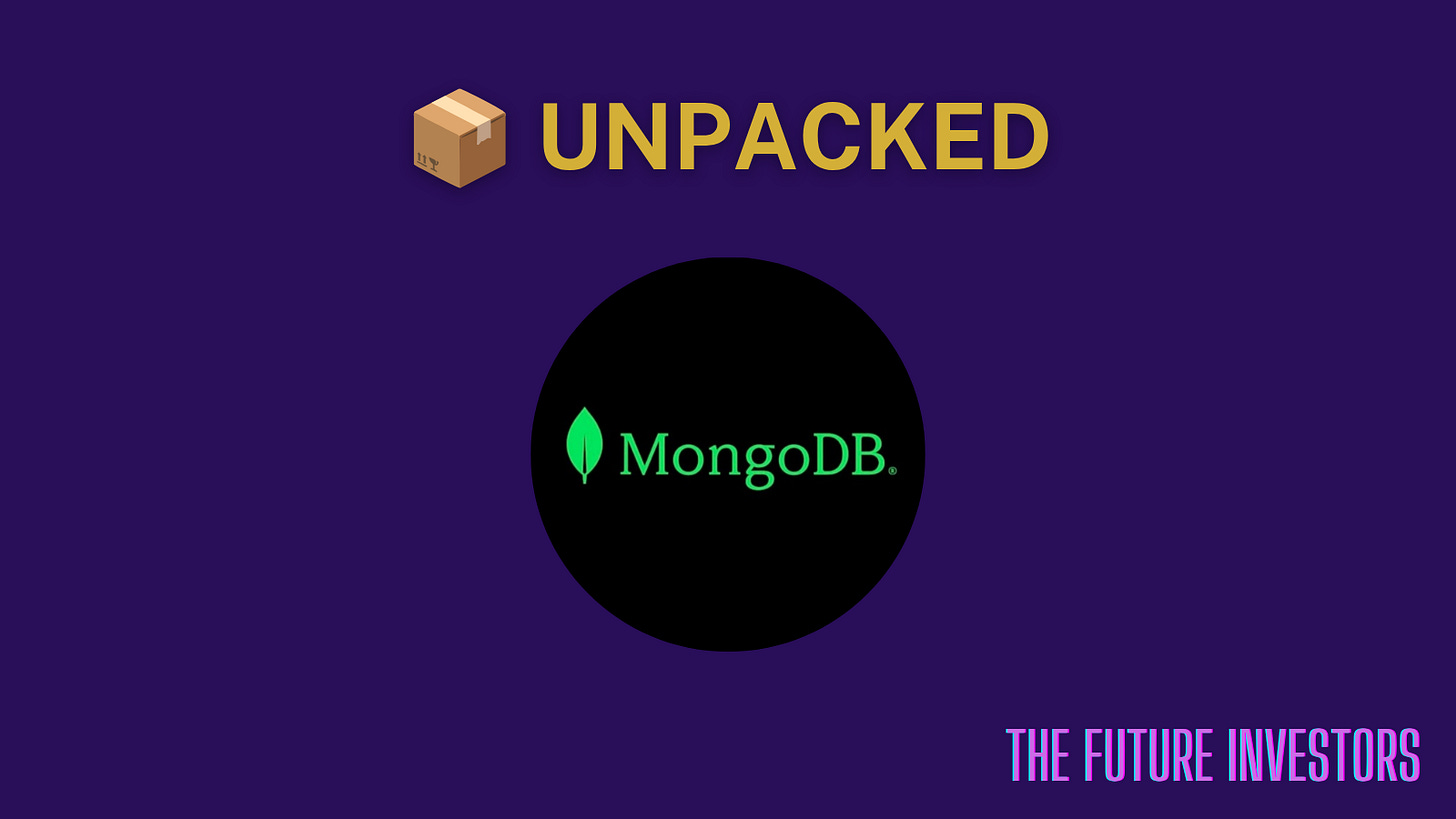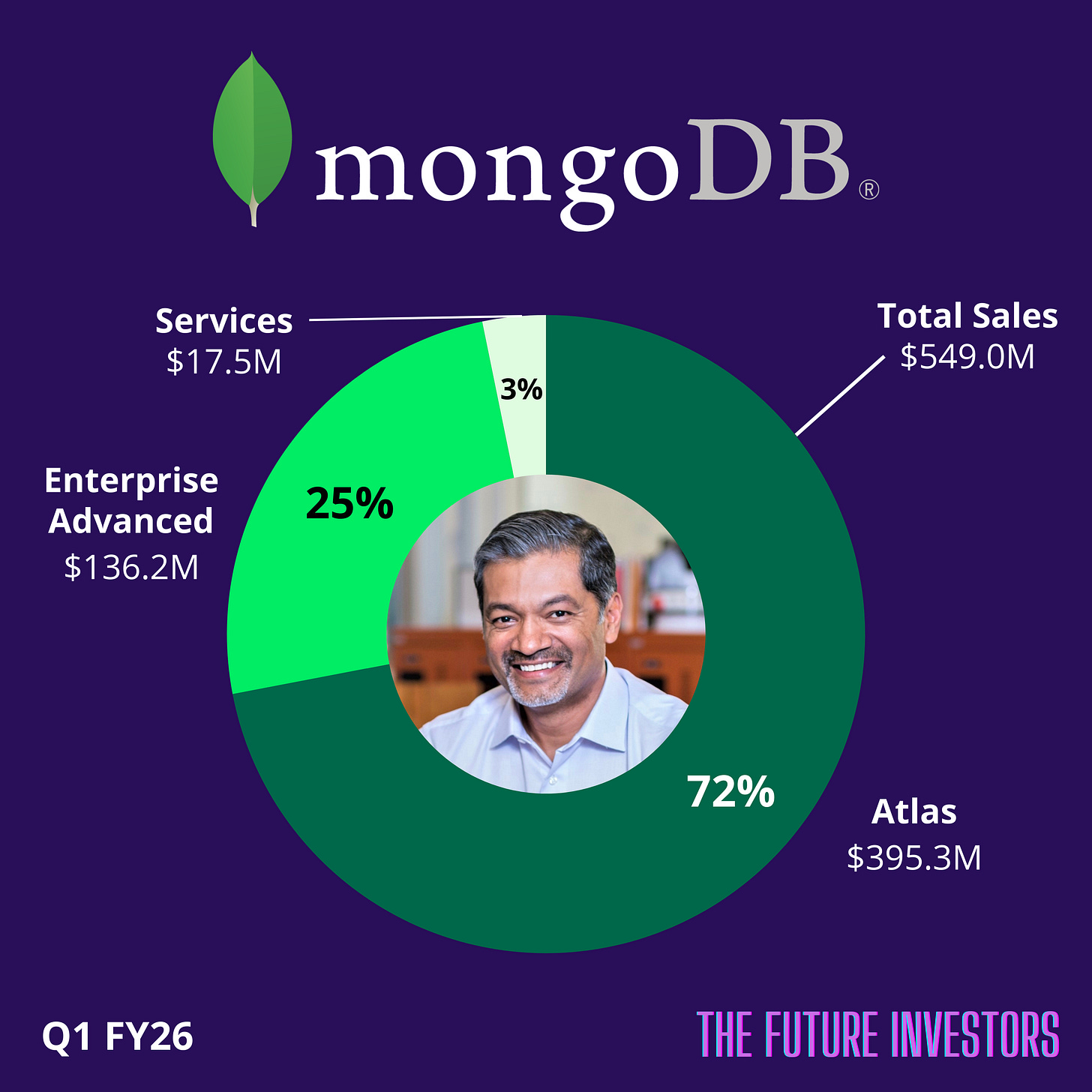Welcome to the 5th edition of Unpacked, our monthly series where we take a deep dive into a company. This time, we’re taking a closer look at MongoDB — the software company and database disruptor that has become a cornerstone of modern applications.
We break down its story, business model, and highlight the latest developments.
Additionally, we do a detailed fundamental analysis, diving into the company’s management, market, financials, and growth estimates. We score each area separately, leading to a final score between 0 and 100. This score reflects how fundamentally attractive we believe the company is as an investment, ranging from:
🔴 Below 50 → Uninvestable
🟠 50 - 59 → Questionable
🟡 60 - 69 → Reasonable
🟢 70 - 79 → Quality
🔵 80 - 89 → High-Quality
🟣 90 or above → Exceptional
The goal? To give you a full deep dive into this company, as a complement to your own research, so you can decide if it’s the right investment for you.
In case you missed it, here you can read the previous editions of Unpacked:
Now let’s unpack the fundamentals of MongoDB — and see how we score it!
History and Business Model
MongoDB was founded in 2007 in New York by Dwight Merriman, Eliot Horowitz, and Kevin Ryan. The three had previously worked together at DoubleClick, where they kept running into the same problem: traditional relational databases couldn’t keep up with the flexibility and scale the internet required. Data was getting more complex, but the tools to manage it were outdated and inflexible.
The solution they created was MongoDB, a database designed to store and work with data in a more natural way. Instead of fixed rows and tables, it used a flexible, document-based system that let developers move faster and update their apps more easily. The first release came in 2009, and adoption spread fast through the developer community. Over the years, MongoDB grew from an open-source project into one of the most widely used modern databases, supported by a strong ecosystem and community.
In 2017, the company went public on the Nasdaq, and became a recognized name in enterprise software. Today, MongoDB is used by companies of all sizes, powering apps in finance, healthcare, gaming, and e-commerce.
👉 In the video below, MongoDB is explained in just 100 seconds:
Business Model explained
MongoDB makes money primarily through its subscription-based services. Its core product, MongoDB Atlas, is a fully managed cloud database that runs across AWS, Google Cloud, and Azure. Customers pay based on usage, which means as their applications scale, MongoDB’s revenue grows too. This creates a sticky, recurring model where revenue naturally grows with customer success.
Beyond Atlas, MongoDB also sells enterprise licenses and support for companies that want to run databases on their own infrastructure. These customers pay for features like advanced security, compliance, and analytics — areas that are critical for large organizations with complex requirements.
The mix of open-source adoption, a fast-growing cloud platform, and enterprise contracts gives MongoDB a balanced model: easy for developers to start with, but also valuable for the largest companies running critical applications.
Revenue Breakdown
In the first quarter of fiscal year 2026, MongoDB reported $549 million in revenue, up 22% from last year. Most of this comes from its cloud platform Atlas, but the company also earns from on-premise enterprise solutions and services.
MongoDB Atlas ($395 million, 72%)
Atlas is MongoDB’s fully managed cloud database that runs on AWS, Google Cloud, and Azure. It has become the company’s main growth driver, offering scalability, automation, and global availability out of the box. Revenue here rises as customers use it more, making it a recurring stream that grows with customer success.
Enterprise Advanced ($136.2 million, 25%)
Enterprise Advanced includes on-premise licenses and support for companies that prefer to run MongoDB themselves or need extra security, compliance, and integration features. It is smaller than Atlas, but still important for large corporations running critical workloads.
Services ($17.5 million, 3%)
This segment covers professional services like training, consulting, and customer support. It’s a small part of revenue, but helps customers get more out of MongoDB and builds stronger long-term relationships.
Recent Developments
MongoDB has been building its platform for the next wave of applications. With new product updates, acquisitions, and partnerships, the company has shown where it’s heading:
MongoDB 8.0 release
In October 2024, MongoDB launched version 8.0 with big performance gains. Reads became 36% faster, updates nearly 60% more efficient, and scaling across servers easier and cheaper.Acquisition of Voyage AI
In early 2025, MongoDB acquired AI startup Voyage AI for around $220 million. The deal strengthens MongoDB’s ability to integrate real-time data, embeddings, and semantic search directly into its database. A clear step to position Atlas as a go-to platform for AI-powered applications.Expanded partnership with Google Cloud
At Google Cloud Next 2025, MongoDB announced an expansion of Atlas to new regions like Mexico and South Africa. It also added deeper integration with Google’s Gemini AI tools to make developers more productive.Strong financial results and buyback program
In Q1 FY 2026, MongoDB posted $549 million in revenue, up 22% from last year, with Atlas growing 26%. It added over 2,600 customers — its best quarter in years — and launched an $800 million share buyback program.
Don’t Miss This — 26% Off for Life! 🔥
Unlock full access to everything we offer ✨ and enjoy a lifetime 26% discount on your annual plan. Cancel anytime ✅
Fundamental Analysis
Now it’s time for the fundamental analysis!
In this section, we evaluate three key areas: management, market, and financials & growth estimates. Each area contains multiple elements and each element is scored individually, leading to a final score between 0 and 100.
Final Scoring
This score reflects how fundamentally attractive we believe the company is as an investment, ranging from:
🔴 Below 50 → Uninvestable
🟠 50 - 59 → Questionable
🟡 60 - 69 → Reasonable
🟢 70 - 79 → Quality
🔵 80 - 89 → High-Quality
🟣 90 or above → Exceptional
Unlock our scoring framework and full fundamental analysis below, and see how we score MongoDB on a scale from 0 to 100 — exclusively available to our paid members! 🚀



